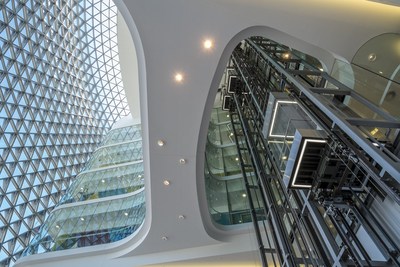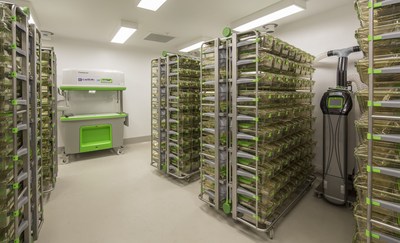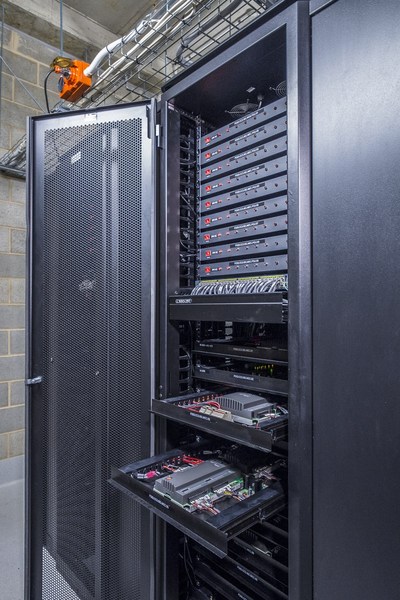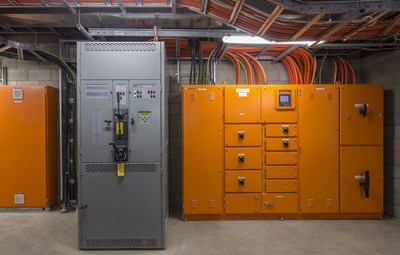Aurecon delivers 'intelligent' building for medical research institute
Tuesday, 04 March, 2014
The South Australian Health and Medical Institute (SAHMRI) aims to translate medical research results into medical health outcomes that will reach the community. Up to 675 of the world’s foremost scientists will work in the $200 million smart building.
In order to help the scientists get on with their respective jobs without having to worry about whether factors like lighting and temperature are affecting their work, a fully integrated solution across all building services, facilities and functional areas was implemented.

Aurecon was significantly involved in developing the facility. The Aurecon project team was responsible for electrical, communications and fire services, as well as vertical transportation and integrated building systems.
“The vision for integration stretched the boundaries of the standard design, procurement and construction process,” said Justin Goodman, Aurecon Building Services project director.
“Thinking outside the square, SAHMRI, together with Aurecon, was able to enhance the integration, through combining packages of work from traditional electrical, mechanical and communications services, to encapsulate the intellect of one of Australia’s most integrated buildings in its operation and control.”
Aurecon was involved in numerous fit-out projects within the building including a cyclotron facility, preclinical imaging and research laboratory, PC2/QC2 laboratory and IT spaces. The team provided input on lighting control solutions, appropriate fire services for the preclinical imaging, and research laboratory and services reticulation strategies to maintain stringent PC2/QC2 requirements in the laboratories.

Combining all building control systems into one design package provided the managing contractor with a single platform from which to work and enabled the delivery of a dynamic, responsive, world-class facility, with all systems working together to provide the adaptability and flexibility required throughout the facility’s life cycle.
The Integrated Building System (IBS) includes the integration and monitoring of the heating and cooling, hydraulics, lifts, fire, electrical, lighting, security systems and lab controls. This ‘intelligence’ provides real-time measurement of energy and water consumption and gives SAHMRI the data to improve energy efficiency and operational costs throughout the facility’s life cycle.
Systems integration addresses the complexity and flexibility required for the purpose-built facility. It optimises the facility by incorporating and monitoring all the required physical components and their exact usage, thereby providing data for accurate and timely maintenance planning. In addition, it rapidly reports on failure, alerting the people who need to know and triggering a chain of events to effectively manage the failure.

To ensure optimal network performance, SAHMRI and Aurecon implemented the iPatch intelligent patching technology - a solution that gives systems managers a real-time view of the network physical layer.
Through iPatch panels, systems managers can monitor network connections and attached devices from the desktop PC. This intelligent infrastructure allows them to stay a step ahead of demand for connectivity and enable efficient changes and improved network security.
The new network infrastructure, designed for high reliability and efficient operation, includes real-time information on connection status and displays on the patching frames. This helps minimise network downtime and provides technicians with guidance, allowing them to work faster and with fewer errors.
This is the first full implementation of the ImVision System Manager Version 7.0 SP3 in the world.

The implementation of a peak load lopping system, using the local on-site emergency power generation, coupled with dual fuel technology, reduces operational costs by decreasing ongoing energy demand changes, and assists with site peak load management.
As part of an innovative sustainability program, the project is the first laboratory building in Australia designed to achieve a Leadership in Energy and Environmental Design (LEED) gold rating. Aurecon developed an integrated solution for large-scale PV, energy-efficient lighting and overall systems control, which it says supports the achievement of this globally recognised standard.

Aurecon’s design involvement and decision-making looked beyond capital expenditure and the project life cycle to the ongoing operational needs of the building. The team worked closely with the managing contractor on procurement strategies, constructability, budget and program to implement solutions to create energy efficiencies and intelligent building systems for the life of the asset.
“Aurecon displayed seamless integration with all the professional engineering consultants on the project, working collaboratively and sharing its expertise for the best outcome for the client and outstanding deliverables,” said Michelle Gheorghiu, director, infrastructure and capital planning, SAHMRI.
“I strongly support and recommend Aurecon’s building services team to anyone embarking on complex and major projects.”
Aurecon is continuing to work closely with SAHMRI and its commissioning agent during the handover phase to ensure all systems are operating correctly and all specialised functions are delivered.
Taking action on sustainable cooling
Demand for cooling is set to triple by 2050, due to population increases, more extreme-heat...
New digital twin will plan the energy systems of the future
A Netherlands-based project has received a massive €16.5m grant to simulate and study the...
Dynamic software for a global BESS developer
Australia's Akaysha Energy enlisted the services of Gurobi Optimization to help fine-tune its...




